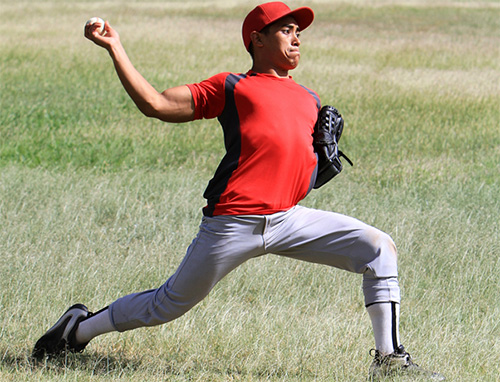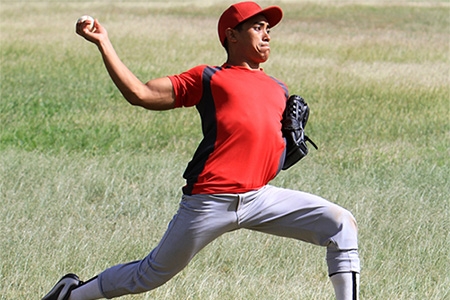
America’s favorite pastime is baseball. On fields all across America, people gather to play or watch the game from T-ball to the Major Leagues.
Baseball puts a lot of stress on the shoulder because of the overhead throwing motion. When one part of the shoulder, like the ligaments, becomes weakened through repetitive motion, the rest of the shoulder structure will overcompensate leading to overuse injuries.
Overuse injuries from sports are often successfully treated with rest, anti-inflammatories, and a strengthening program. However, persistent pain may be a sign of a more serious problem. Common shoulder injuries in baseball include:
- Sprains and Strains: Both sprains and strains are the result of stretching beyond capacity. A sprain is an overstretching of a ligament. A strain refers to damage of a muscle or tendon from overstretching. Severe cases of sprains and strains can result in a tear.
- Rotator Cuff Injury: The rotator cuff is a group of four muscles that coordinate the shoulder’s movement. The repetitive motion of overhead throwing can cause the tendons of the rotator cuff to become compressed, eventually leading to pain or even a tear.
- SLAP Tear: SLAP is an acronym for superior labrum anterior and posterior. In a SLAP injury, the top (superior) part of the labrum is injured. Typical symptoms are a catching or locking sensation in the shoulder and pain with certain movements.
- Shoulder Instability: In throwers, instability develops gradually over years from repetitive throwing that stretches the ligaments and creates increased laxity (looseness). If the rotator cuff is not able to control the laxity, then the shoulder will slip slightly off-center (subluxation) during the throwing motion.
- Rotator Cuff Tendonitis: When a muscle or tendon is overworked, it can become inflamed. This inflammation is tendonitis. The rotator cuff is frequently irritated in throwers, resulting in tendinitis and can range from mild to severe.
- Shoulder Dislocations: Shoulder dislocations most often occur when there is some sort of collision or trauma on the baseball field such as sliding into base, diving for a catch, or collision with another player. However, if shoulder instability is left untreated, it can also lead to a dislocation of the shoulder.
Baseball puts a lot of stress on the shoulder, and athletes can experience a wide range of injuries. Thankfully, overuse injuries can often be treated with conservative methods.
If you have experienced a shoulder injury while playing baseball, give me a call. Let’s get you back on the field for America’s favorite pastime.
Milan M. DiGiulio, M.D. offers comprehensive orthopedic care for you and your entire family, specializing in Sports Medicine and arthroscopic surgery of the shoulder and knee. Dr. DiGiulio performs over 200 arthroscopic shoulder and knee surgeries each year, using the most advanced surgical technology. Dr. DiGiulio is an advocate of non-invasive, non-surgical treatment options such as Physical Therapy and Orthobiologics.









